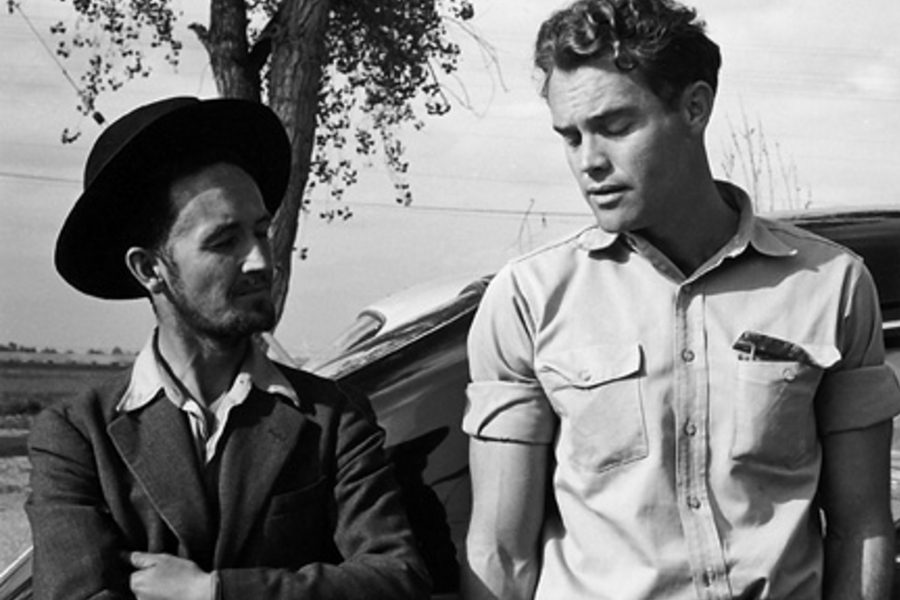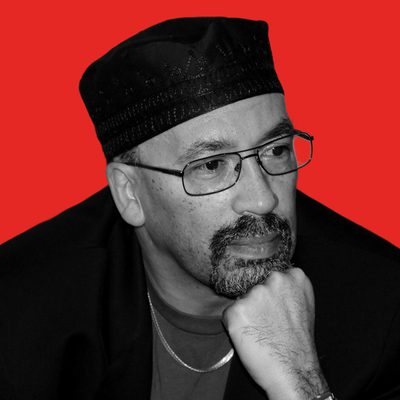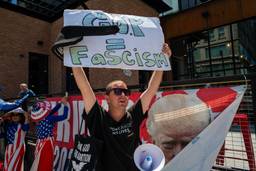What Activists Committed to the Long-Haul Fight Can Learn from the Life of Organizer Fred Ross
Bill Fletcher, Jr.

The biographies of icons frequently fall into one of two categories. On the one hand they may be laudatory, in some cases turning the subject into a saint. At the opposite end, they can tend towards tell-all pieces, in some cases aiming to tear down the subject. What makes America’s Social Arsonist: Fred Ross and Grassroots Organizing in the Twentieth Century, Gabriel Thompson’s new biography of the legendary community organizer, unusual is that it presents a very balanced account of the life and work of one of the foremost progressive organizers of the 20th century, while at the same time offering very useful insights into the art and craft of progressive organizing.
In many respects, Ross’s life is the story of a significant segment of the progressive movement in California. He came of age politically during the 1930s; witnessing the great agricultural worker struggles of that era which came in the aftermath of the mass deportation of Chicanos and Mexicans in 1930s which came to be associated with the term, “Los Repatriados,” found himself face-to-face with the imprisonment of Japanese-Americans in concentration camps during World War II and his slow but steady emergence as an organizer and theorist within the Community Service Organization (and later, the United Farm Workers).
Although Ross and legendary organizer Saul Alinsky were quite close, and Ross actually worked for Alinsky for a period of time, Ross departed from his mentor in two important respects. First, central to Alinsky’s approach to organizing was the notion of building an organization of organizations. Through the Industrial Areas Foundation, locally-based coalitions were put together, frequently rooted in the religious community. This aimed to guarantee some level of credibility for the organizing effort. But Ross disagreed: He believed in the need to create new community-based organizations that were unencumbered by older leaderships who he frequently believed to be too passive or otherwise obstructive.
The other difference is that Ross recognized the importance of the Chicano movement in California and was prepared to engage in struggles that some organizers, influenced by Alinsky, would have concluded were far too divisive. The Community Service Organization, which he helped to build, was rooted in the Chicano movement, though open to others. It fought against police brutality that was directed at Chicanos and attempted to build Chicano political power in Los Angeles.
Although Ross did not present himself as a person of the Left (probably in part due to the Cold War persecution of leftists), his inclinations were clearly toward the Left. He mostly refused to engage in the sort of redbaiting that was common from the 1940s to the 1960s, even among many progressives.
This fact gave me pause. I have been highly critical of Alinsky and those who have followed in his wake for their de-ideologizing of organizing: an approach that suggests that it is almost unimportant what one organizes around; it is the act of organizing itself that raises the political consciousness of those engaged, and raises it in a progressive direction. This de-ideologizing by many of Alinsky’s followers made its way into the ranks of organized labor, particularly in the 1980s and 1990s and played a counter-productive role in efforts at labor renewal.
The Ross described by Thompson appears to have been a somewhat different sort of character. On the one hand, there is no attention to ideology and leftist political education in the organizing that he conducted. In that sense, there is a consistency with Alinsky. At the same time, Ross’s approach, as demonstrated by the sorts of struggles in which he engaged, seems more akin to a sort of “evolutionary leftism,” that through various forms of progressive organizing, we will naturally achieve the kinds of transformations we need as a society — no larger ideology necessary.
Such an approach eschews the importance of movement-wide strategic objectives, rooted in a larger political vision. Nevertheless, this appears to be a difference between Ross and Alinsky that was overshadowed by their close friendship over the years.
The other aspect of Thompson’s treatment that I especially appreciated revolved around the question of family. Ross’s family life was largely tragic. It is not just that his two marriages ended in divorce. Rather, Ross’s approach towards his organizing life was to put organizing before everything else.
At one point in history such an approach would have been considered noble, if not heroic. Yet, in reading about his ignoring his two wives, and spending limited amounts of time with his children (with the notable exception of Fred Ross, Jr. who followed in his father’s footsteps as an organizer), what was striking was both Ross’ sexism and his blindness to the multi-dimensional side to living the life of an organizer.The sexism was especially ironic because Ross made reaching women a priority in his organizing.
In Ross’ era, it was frequently accepted that men could go off and save the world and the women should take care of the home front. We should be careful about judging a past period based on the norms of our current era. Yet one can conclude that, first, there were alternative courses even during that era, and, second, that the cost, not only to Ross’s two wives and children but to Ross himself, were severe.
In social movements there are intense pressures on organizers — paid and unpaid — to put everything else aside in the name of the cause. There are circumstances where that is necessary, if not unavoidable. I am reminded of a South African activist, Nimrod Sejake, who was exiled due to his anti-apartheid work, spending years in Ireland, the result being his missing out on years in the lives of his children. One cannot second guess such a decision, made under extreme conditions. Yet the decision came at great cost. His family was very divided over whether his sacrifice had been worth it, a very tragic legacy for a person who committed so much for a greater cause.
For Ross, however, the idea of the organizer prioritizing organizing above everything — including one’s family — rose to the level of principle. It was not only about what one might be forced to do under extraordinary circumstances, but what an organizer should be prepared to do at virtually any point. In Ross’s case, this included ignoring his wife during certain key moments when she was recovering from polio.
The failure to recognize the need for a balance which includes a family and a life committed to social justice inevitably led to dysfunctions in the way that Ross thought and operated. The movement became everything, and this meant, at certain key moments — as we would see when Ross worked with Cesar Chavez — a willingness to turn a blind eye to terrible, abusive practices carried out in the name of the movement. Ross failed to question the actions of someone who, even more than Ross, believed that he was putting the movement before everything else.
Thompson also offers an insightful and emotionally challenging look at the development of the United Farm Workers of America. Cesar Chavez, the legendary founding President of the union, was someone who Ross mentored. Over the years their relationship evolved, such that Ross came to not only admire Chavez, but to see him as the leader who could transform American society. This evolution took very tragic consequences when Chavez himself evolved into a leader filled with paranoia, anti-communism, and quite possibly, some level of anti-Semitism, as Randy Shaw recounts in Beyond the Fields: Cesar Chavez, the UFW, and the Struggle for Justice in the 21st Century.
Ross witnessed firsthand the deterioration of the UFW, including the purges carried out against outstanding leaders and activists, such as the purging of two great leading figures in the UFW, Marshal Ganz and Eliseo Medina (the latter going on to become Secretary-Treasurer of SEIU), or the manipulation of a key vote at the UFW convention that led to the departure of many UFW activists, feeling betrayed. Yet he said nothing. Thompson proposes that Ross might have been one of the few people who could have successfully challenged Chavez as he descended into Tartarus, taking with him a union that in so many ways pointed in the direction necessary for broader U.S. labor renewal.
Thompson not only tells an excellent story, but he also, at key moments in the book, identifies certain lessons for organizers, drawing from the life and work of Ross. He does not editorialize as to whether he, in every case, agrees with Ross, but the lessons are clear. One example, noted above, was Ross’ awareness that women are generally the best organizers, and that if one wishes to get any substantial project off the ground, one must win over women. It was not clear, however, the extent to which Ross recognized that winning over women was not just about winning them in the initial organizing efforts, but ensuring that they have a full leadership role throughout the process of the construction and life of an organization.
Ross, additionally, promoted the notion of beginning with where people are, then moving them forward, a truism for organizing whether one subscribes to Alinsky or Mao Zedong. The book lists myriad of additional lessons that Ross drew from his own experiences and which he theorized, to varying degrees.
Ross did not believe in the concept of “burnout”. He believed that an organizer is either an organizer or they have given up and dropped out. In reading about this I was reminded of the famous story of the incident involving General George S. Patton — during World War II — where he hit a soldier who was suffering battle fatigue (an incident dramatized in George C. Scott’s remarkable portrayal of the general in Patton).
In both Ross and Patton’s case, there was a misreading of human beings. These were not simply examples of macho, whether applied to organizing or to war. It was a failure to understand how human beings cope with pressure and particularly over extended periods of time. Organizers do burnout. Some of them leave the movement entirely; others return full swing after a certain period; and others ‘renegotiate’ their relationship to the movement on different terms.
A good friend of mine stepped away from a leadership position in a major local union. I asked him why he did this. He replied: “Because of my family. I realized that if things kept going the way that they were going, I would not be part of the lives of my children as they grew up nor be a good partner for my wife.”
Ross might have described such an approach as what we used to call “half-stepping,” evidence of someone who wasn’t fully committed to the movement. I would look at it as more of an adjustment to the simple fact that involvement in the movement is a marathon. This is a long-distance race during which time one’s speed may vary or breathing may change. But one never loses sight of the final goal. Failing to appreciate the multi-dimensionality to the life of an organizer guarantees that instead of building and reinforcing organizers, we produce Blade Runner-type replicants or androids who may, at first glance, appear to be human, but have actually lost their souls.
In many respects, this is what appears to have happened to Ross. Yes, he was without question great and dedicated. But in failing to appreciate the marathon nature of our journey and the need for balance, he began losing pieces of the humanity for which he had actually been fighting for most of his life.
Gabriel Thompson has produced one of the most thought-provoking books on organizing and affecting social change that I have read in some time. In telling Fred Ross’ life story, Thompson has dared to push the envelope on matters that many progressives would rather ignore.
Bill Fletcher, Jr. is a talk show host, writer, activist, and trade unionist. The Man Who Changed Colors is his latest novel. His first novel is The Man Who Fell From the Sky. He is also co-author (with Fernando Gapasin) of Solitary Divided, and the author of “They’re Bankrupting Us” — Twenty Other Myths about Unions. You can follow him on Twitter, Facebook and at www.billfletcherjr.com.








